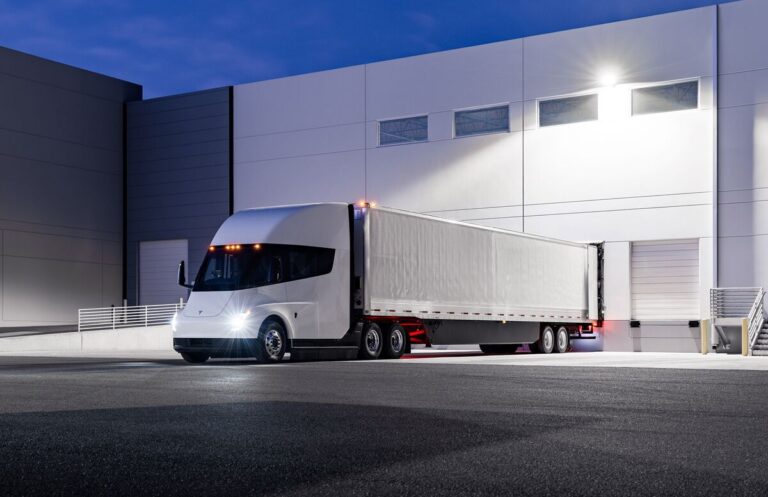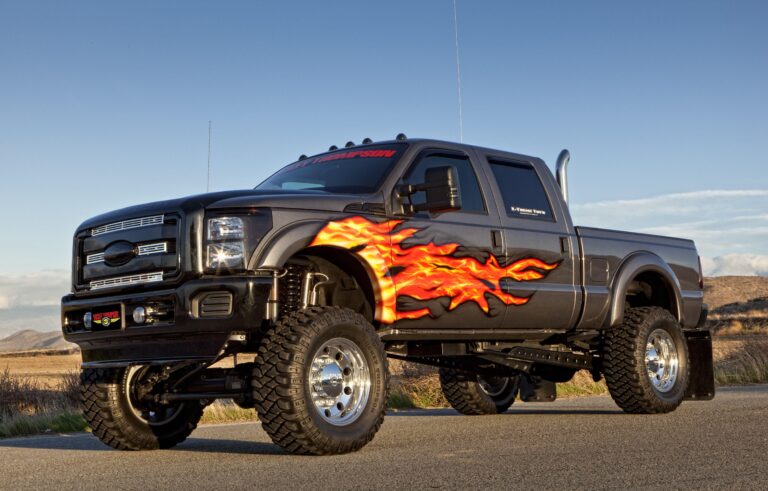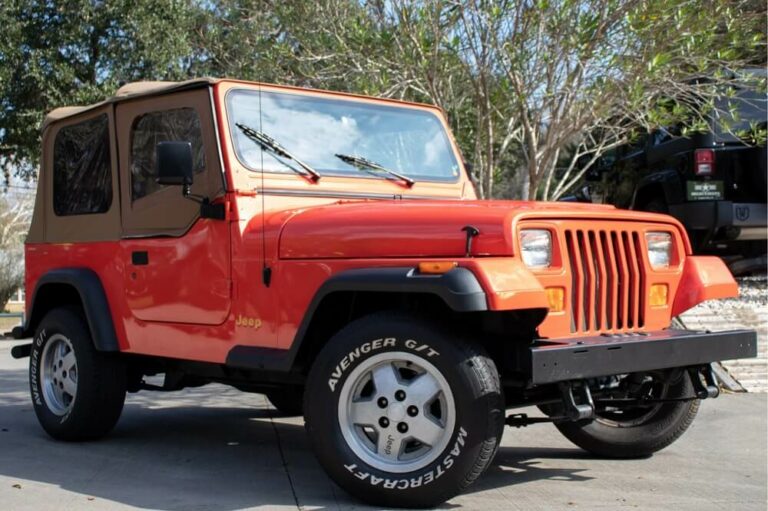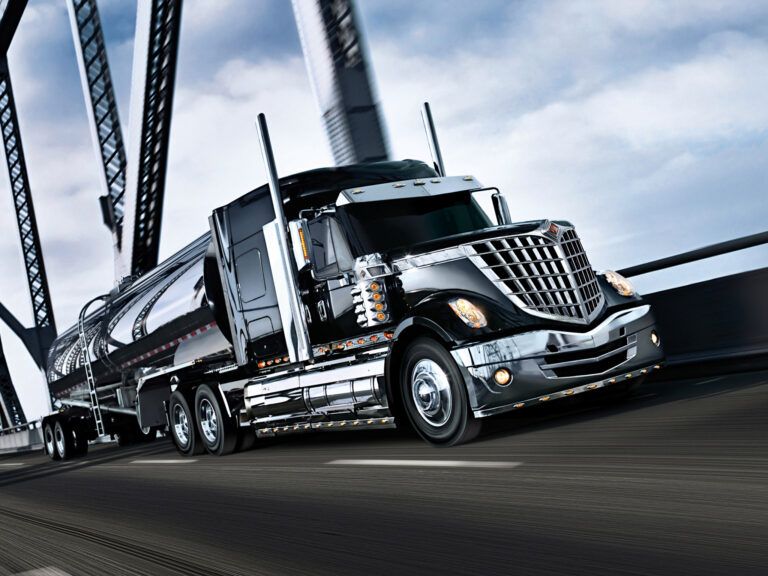U-Haul Truck Rental: Your Comprehensive Guide to a Seamless Move
U-Haul Truck Rental: Your Comprehensive Guide to a Seamless Move cars.truckstrend.com
Moving, whether across town or across the country, is often cited as one of life’s most stressful events. Amidst the chaos of packing, sorting, and planning, one crucial decision stands out: how to transport your worldly possessions safely and efficiently. For millions, the answer lies in U-Haul Truck Rental. As a pioneer and leader in the do-it-yourself (DIY) moving industry, U-Haul has revolutionized how individuals approach relocation, offering an accessible, flexible, and often more economical alternative to full-service movers.
U-Haul Truck Rental isn’t just about handing over keys to a vehicle; it’s about empowering individuals with the tools and resources to take control of their move. From a sprawling network of locations to a diverse fleet of vehicles and an array of supplementary services, U-Haul provides a comprehensive ecosystem designed to simplify the moving process. This guide will delve deep into the world of U-Haul Truck Rental, exploring its benefits, outlining the rental process, offering practical advice, and addressing common queries to ensure your next move is as smooth as possible.
U-Haul Truck Rental: Your Comprehensive Guide to a Seamless Move
Understanding U-Haul Truck Rental: A Legacy of DIY Moving
Founded in 1945 by Leonard Shoen, U-Haul began with a simple yet revolutionary idea: providing trailers for rent to returning World War II veterans needing to move their families. From humble beginnings in the backyard of a Los Angeles home, U-Haul grew into a household name, synonymous with DIY moving. Today, U-Haul International, Inc. boasts over 21,000 locations across the United States and Canada, making it the largest rental fleet in the industry.
At its core, U-Haul Truck Rental offers a wide selection of trucks, vans, and trailers designed for various moving needs. This extensive fleet is complemented by moving supplies, storage solutions, and even moving labor services, creating a one-stop shop for all things relocation. The company’s mission revolves around making moving easier and more affordable for everyone, fostering a sense of independence and control over what can often feel like an overwhelming task.
The Fleet at Your Fingertips: Choosing the Right U-Haul Truck Size
One of U-Haul’s greatest strengths is its diverse fleet, ensuring there’s a vehicle perfectly suited for nearly any moving scenario. Understanding the different sizes and their capacities is crucial for an efficient and cost-effective move.
- Cargo Vans: Ideal for studio apartments, dorm rooms, or small local deliveries. They offer an enclosed, secure space for smaller loads, typically around 200-300 cubic feet.
- Pickup Trucks: Great for hauling lumber, gardening supplies, or small furniture items. They offer an open bed and are not typically used for full household moves but excel at specific tasks.
- 8′ Pickup Truck: U-Haul’s smallest dedicated moving truck, often used for a small studio or dorm room. It holds approximately 300 cubic feet.
- 10′ Truck: Perfect for a studio or a small one-bedroom apartment. This truck typically holds the contents of one room, roughly 400 cubic feet, and is easy to drive.
- 15′ Truck: The most popular size for one-to-two-bedroom apartments or small homes. It can accommodate approximately 600 cubic feet and often features a loading ramp for easier access.
- 20′ Truck: Suited for two-to-three-bedroom homes. This truck offers around 1,000 cubic feet of space, making it capable of handling larger furniture and more boxes. It also typically includes a loading ramp.
- 26′ Truck: U-Haul’s largest rental truck, designed for three-to-five-bedroom homes. With approximately 1,400 cubic feet of space, it’s ideal for large family moves, often allowing for a single trip. It also comes with a loading ramp.

![]()
Choosing the right size is paramount. An undersized truck means multiple trips or leaving items behind, increasing costs and stress. An oversized truck, while ensuring everything fits, can be harder to drive, consume more fuel, and cost more than necessary. U-Haul provides online tools and customer service assistance to help you estimate the best truck size based on your home’s size and contents.
Beyond the Truck: U-Haul’s Comprehensive Moving Solutions
U-Haul’s offerings extend far beyond just trucks, creating a holistic moving solution for its customers.
- Trailers:
- Utility Trailers: Open trailers in various sizes, perfect for hauling anything from landscaping materials to motorcycles.
- Cargo Trailers: Enclosed trailers offering secure, weather-protected transport for smaller loads, ideal for extra storage or items that don’t fit in a truck.
- Car Haulers & Auto Transports: Essential for those needing to move a vehicle along with their household goods. Car haulers are full trailers where all four wheels of the vehicle are off the ground, while auto transports are simpler tow dollies that lift only the front wheels.
- Moving Supplies: From a vast array of boxes (wardrobe, dish pack, small, medium, large) to packing tape, bubble wrap, furniture pads, and utility dollies, U-Haul offers everything you need to pack and protect your belongings.
- Storage Solutions: U-Haul operates numerous self-storage facilities, providing convenient options for short-term or long-term storage needs, often co-located with truck rental centers.
- Moving Help®: For those who need assistance but still want to drive their own truck, U-Haul connects customers with independent moving labor companies for packing, loading, unloading, and cleaning services. This offers the best of both worlds: control over your transportation and professional help with the heavy lifting.

The Rental Process: A Step-by-Step Guide to Your U-Haul Journey
Renting a U-Haul truck is designed to be straightforward, whether you’re a first-timer or a seasoned mover.
-
Reservation:
- Online: The most common and convenient method. Visit uhaul.com, enter your pickup and drop-off locations, dates, and desired truck size. You’ll receive an instant quote.
- Phone: Call U-Haul’s reservation line to speak with a representative.
- In-Person: Visit a local U-Haul dealer or company-owned store.
- One-Way vs. Local: Decide if you need a one-way rental (pickup at one location, drop-off at another) or a local rental (pickup and drop-off at the same location). One-way rentals are generally more expensive due to logistics.
-
Pickup:
- In-Store: Arrive at your scheduled time with your driver’s license and payment method. A U-Haul representative will walk you through the rental agreement, inspect the truck with you, and hand over the keys.
- 24/7 Truck Share (Self-Pickup): U-Haul offers a convenient mobile self-pickup option. You’ll need to create a U-Haul account online, upload a photo of your driver’s license, and take a selfie. At pickup time, you’ll use the U-Haul app on your smartphone to verify your identity, receive the truck’s location, and unlock the vehicle. This is excellent for after-hours pickups.
-
Driving Considerations:
- Familiarize Yourself: Before hitting the road, adjust mirrors, test brakes, and get a feel for the truck’s size.
- Speed Limits: U-Haul trucks often have lower recommended speed limits than passenger vehicles, especially when loaded. Pay attention to signage and drive cautiously.
- Turning & Braking: Trucks have a wider turning radius and require more distance to stop. Allow ample space.
- Overhead Clearances: Be mindful of low bridges, drive-thrus, and parking garage entrances.
- Fuel: U-Haul trucks use unleaded gasoline. You are responsible for returning the truck with the same fuel level as when you picked it up.
-
Return:
- Fuel Up: Before returning, ensure the fuel tank is at the specified level (usually quarter or half tank, or the same level as pickup). Failure to do so results in hefty refueling charges.
- Clean Out: Remove all your belongings and any trash.
- Drop-Off:
- In-Store: Return the truck to the designated drop-off location during business hours. A representative will inspect the vehicle and close out your contract.
- 24/7 Truck Share (Self-Return): Park the truck in the designated area, follow the prompts on the U-Haul app to document its condition and fuel level, lock it, and drop the keys in the designated box.
Cost Considerations and Smart Budgeting for Your U-Haul Rental
Understanding U-Haul pricing can seem complex due to its dynamic nature. Several factors influence the final cost:
- Base Rate: This is the initial cost for the truck size and duration.
- Mileage Charge: For local rentals, there’s usually a per-mile charge (e.g., $0.99/mile). For one-way rentals, mileage is typically included in the base rate, but there’s a cap, and you’re charged if you exceed it.
- Fuel: You are responsible for the fuel consumed.
- Environmental Fee: A small, mandatory fee.
- Taxes: Applicable sales taxes.
- Optional Insurance:
- Safemove®: Covers accidental damage to the U-Haul equipment, damage to your cargo, and offers medical/life coverage for the driver and passengers.
- Safemove Plus®: Includes everything in Safemove plus supplemental liability insurance, which covers damage to other people’s property or injuries if you’re at fault in an accident.
- CDW (Collision Damage Waiver): May be offered by your credit card company, but often doesn’t cover rental trucks. Check your personal auto insurance policy as well, but many policies exclude rental trucks. U-Haul’s Safemove options are highly recommended for peace of mind.
- Equipment Add-ons: Dollies, furniture pads, and moving boxes are additional costs.
- Late Fees/Refueling Charges: Avoid these by returning on time with the correct fuel level.
Representative U-Haul Truck Rental Price Estimates (Subject to Change & Location)
Please note that U-Haul pricing is highly dynamic and depends on location, date, availability, demand, and duration. The table below provides estimated starting prices for typical scenarios. Always obtain an official quote from U-Haul directly for accurate pricing.
| Truck Size | Typical Local Rental Base Rate (Daily) | Estimated Per-Mile Charge (Local) | Estimated One-Way Rental Base Rate (3-5 Days, 100-200 Miles Incl.) | Fuel Type | Additional Common Costs (Estimates) |
|---|---|---|---|---|---|
| Cargo Van | $19.95 – $29.95 | $0.89 – $1.09 | $150 – $350+ | Unleaded | Safemove: $15-25/day |
| Pickup Truck | $19.95 – $29.95 | $0.89 – $1.09 | $150 – $350+ | Unleaded | Environmental Fee: $1-5 |
| 10′ Truck | $19.95 – $39.95 | $0.99 – $1.19 | $250 – $600+ | Unleaded | Dollies: $7-10/day |
| 15′ Truck | $29.95 – $49.95 | $0.99 – $1.29 | $350 – $800+ | Unleaded | Furniture Pads: $5-10/dozen |
| 20′ Truck | $39.95 – $59.95 | $0.99 – $1.39 | $450 – $1,000+ | Unleaded | Taxes (variable) |
| 26′ Truck | $39.95 – $59.95 | $0.99 – $1.49 | $550 – $1,200+ | Unleaded | Refueling charges (if not returned full) |
Note on One-Way Rentals: The price for one-way rentals is highly variable. Factors include distance, demand for trucks in the origin/destination city, time of year, and how many days/miles are included in the base rate. Always get a specific quote for your exact one-way trip.
Essential Tips for a Smooth U-Haul Moving Experience
- Book in Advance: Especially during peak moving seasons (summer, end of month, holidays), trucks can be scarce. Book your truck as early as possible.
- Confirm Your Reservation: Reconfirm your pickup time and location a day or two before your move.
- Inspect the Truck Thoroughly: Before driving off, take photos or videos of any existing damage (scratches, dents, fluid leaks) and note it on your contract. Check tire pressure, lights, and fluid levels.
- Pack Smartly: Distribute weight evenly in boxes, label everything, and use appropriate packing materials.
- Load Safely: Place heavy items on the bottom and closest to the cab. Distribute weight evenly from side to side. Secure items with tie-downs or rope to prevent shifting during transit.
- Drive Cautiously: Remember you’re driving a large, heavy vehicle. Take wide turns, brake early, and maintain a safe following distance. Avoid sudden movements.
- Plan Your Route: Avoid narrow streets, low bridges, and construction zones. Use a GPS that can account for truck dimensions.
- Fuel Up Before Returning: Save money by refueling the truck yourself at a gas station rather than paying U-Haul’s inflated refueling charges.
- Consider Insurance: While optional, U-Haul’s Safemove options offer significant peace of mind and protection against unexpected costs.
Navigating Potential Challenges and Finding Solutions
While U-Haul strives for seamless service, challenges can arise. Knowing how to address them can save you stress.
- Vehicle Breakdowns: U-Haul offers 24/7 roadside assistance. Keep their number handy. They will dispatch help or arrange for a replacement vehicle.
- Scheduling Conflicts/No Availability: If your desired truck size or pickup location isn’t available, U-Haul may offer a different size or location. Be flexible if possible, or consider adjusting your moving date.
- Damage Claims: If damage occurs, report it immediately. If you opted for Safemove, follow the claims process outlined in your agreement.
- Return Issues: If the drop-off location is closed, or you can’t find the key drop, use the U-Haul app for 24/7 self-return or call customer service for guidance. Document the return with photos.
Frequently Asked Questions (FAQ)
Q1: Do I need a special driver’s license to drive a U-Haul truck?
A1: No, for U-Haul trucks, a standard valid driver’s license (Class D in most states) is sufficient. No special commercial driver’s license (CDL) is required for personal use.
Q2: How old do I have to be to rent a U-Haul truck?
A2: You must be at least 18 years old to rent a U-Haul truck. For trailers, you must be 16 years old.
Q3: What about gas? Do U-Haul trucks come with a full tank?
A3: U-Haul trucks typically do not come with a full tank. You are required to return the truck with the same amount of fuel as when you picked it up. Always check the fuel gauge at pickup and document it.
Q4: Can I drop off my U-Haul truck at a different location than where I picked it up?
A4: Yes, this is called a "one-way" rental. It’s a common option and is priced differently than a "local" rental where you return the truck to the same location. Ensure your reservation specifies a one-way trip if that’s your intention.
Q5: What kind of insurance do I need for a U-Haul rental?
A5: Your personal auto insurance policy typically does not cover rental trucks. U-Haul offers its own optional coverage plans, Safemove® and Safemove Plus®, which are highly recommended to protect you against damage to the truck, your belongings, and liability.
Q6: What if I’m late returning the truck?
A6: U-Haul charges for additional days if the truck is not returned by the agreed-upon time. It’s best to call U-Haul customer service immediately if you anticipate being late to discuss options and avoid excessive fees.
Q7: Can I tow my car behind a U-Haul truck?
A7: Yes, U-Haul offers car haulers and tow dollies specifically for this purpose. You can rent these along with your truck, but ensure your truck size is appropriate for towing the weight of your vehicle.
Conclusion
U-Haul Truck Rental stands as a cornerstone of the DIY moving industry, offering unparalleled flexibility, a diverse fleet, and a comprehensive suite of services designed to empower individuals during relocation. By understanding the various truck sizes, navigating the rental process, budgeting wisely, and applying practical tips, you can transform the daunting task of moving into a manageable and even empowering experience. While challenges may arise, U-Haul’s extensive support system and your proactive planning can ensure a smooth journey from your old home to your new one. Embrace the spirit of DIY with U-Haul, and take control of your next move with confidence.






